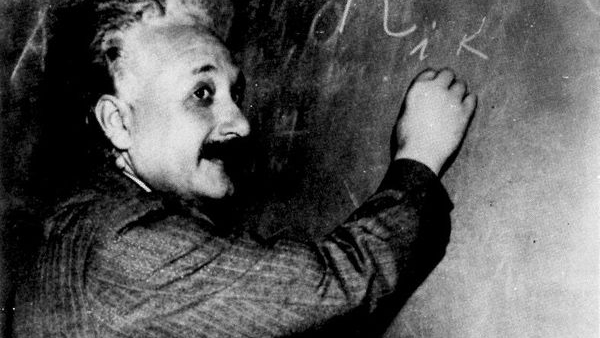How do 'moving rulers shrink'? The strange physics behind special relativity
Special relativity is beyond weird. Among its many statements are that moving clocks run slow and that moving rulers shrink. But how are we supposed to make sense of this?

Special relativity is beyond weird. Among its many statements are that moving clocks run slow and that moving rulers shrink. But how are we supposed to make sense of this? To understand the physics of relativity, we have to dip back in time a bit.
In 1865, James Clerk Maxwell discovered that what we call "light" is really waves of electricity and magnetism. But like all waves, these waves needed to wave through something. Sound waves move through air. Ocean waves move through oceans. So Maxwell believed light waves traveled through a substance known today as the appropriately old-timey "luminiferous aether."
This "aether" (or "ether") had to have some strange properties. You couldn't feel it, touch it, smell it or otherwise sense it. So it had to be nearly invisible but also had to allow light to wave through it, so it had to exist. In the late 1800s, there were many debates about the nature of the aether, and it turns out, everybody was wrong.
Related: The double-slit experiment: Is light a wave or a particle?
But they didn't know they were wrong until a pair of scientists decided to measure our movement through the aether in 1887. That pair was Albert Michelson, of the Case School of Applied Science, and Edward Morley, of Western Reserve University, who devised an experiment we now call the Michelson-Morley experiment at a place we now call Case Western Reserve University.
The basic idea is that if the aether exists, we should be swimming through it and we should notice this movement as a change in the speed of light.
The Michelson-Morley experiment tried to measure this and totally failed. So there was a problem. Light is a wave, and it must move through something — the aether. But we can't seem to measure our own motion through the aether. So what's going on?
Breaking space news, the latest updates on rocket launches, skywatching events and more!
Lengthy contractions
Shortly after the Michelson-Morley experiment, physicist Oliver Heaviside noticed something funky: When electric charges are set in motion, their electric fields squish a little bit along the direction of that motion.
Then came Hendrik Lorentz, who had an absolutely wonderful thought: If we're all made of electric charges and the fields shrink when they move, then maybe we shrink when we move. So we can't measure changes in the speed of light because of length contraction — as we move through the aether, the speed of light changes, but so does our measurement apparatus, thus canceling it out.
This was considered a rather successful theory; it worked and explained all of the data. Matter squishes when it moves from some physical interactions, and the aether is there but undetectable.
Then, Einstein showed up and asked a very important question: If this aether is always and forever undetectable, then why do we need it? Why don't we just let things contract on their own — not to explain away some experimental result we don't like, but as a bare fact of the universe?
This is Einstein's big result. Other people were working in the direction of relativity, but nobody made the leap he did. Einstein declared length contraction to be a feature, not a bug, in the universe. No more aether, no more attempts to fit a square electromagnetic peg into a round aether hole. Lengths contract when they move. Period. End of discussion.
Einstein's length contraction was a little different from Lorentz's. For Lorentz, it was a physical effect, stuff smooshing together. For Einstein, it was a feature of space itself, independent of the actual objects. And this realization allowed Einstein to take yet another powerful leap.
The birth of relativity
To make it all work, Einstein realized there had to be some give-and-take. You can't just have length contraction — moving rulers shrink — on its own. You also need time dilation — moving clocks run slow. These always work together to allow all observations and all perspectives to make sense.
For example, take the humble muon, the heavier sibling of the electron. Because the muon is massive, it has a short life span — only 2.2 microseconds. When energetic particles strike air molecules in the upper atmosphere, they generate muons that then come streaking down toward the ground.
These muons travel at nearly the speed of light, but that's still not fast enough for them to reach the ground during their short lives. But relativity teaches us that moving clocks run slow — from our perspective, the muons persist much longer, so they have more than enough time to make the journey.
But the muon has a different perspective. It doesn't experience time dilation from its point of view, from which it will exist for only 2.2 microseconds. So how does the muon have enough time to reach the ground from its perspective? The answer on this side is length contraction — from the perspective of the speedy muon, the distance to the ground is much shorter, so it doesn't have that far to go.
Special relativity is the mathematical machinery we need to switch perspectives and keep everything organized. The universe may be crazy, but at least it follows rules we can understand.

Paul M. Sutter is a cosmologist at Johns Hopkins University, host of Ask a Spaceman, and author of How to Die in Space.
